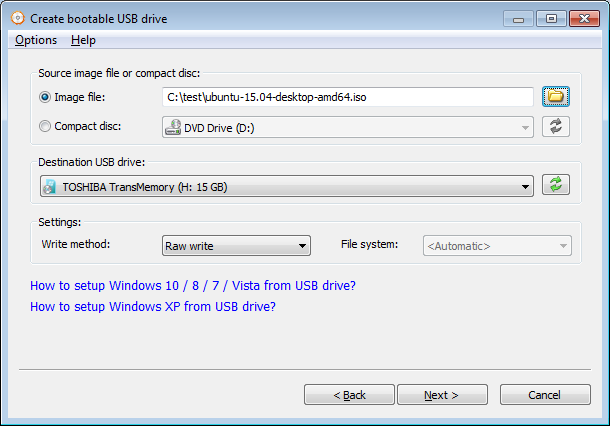

select disk 2 (assuming that it was listed as disk 2).list disk (Note which one is your USB disk – make sure you get the right one!).

Run cmd.exe as Administrator and type the following: Risk of formatting the wrong drive if you don’t know what you are doing with diskpart, so be careful. This is the way I normally end up doing it for some reason, the advantage being that you don’t need any other tools if you are running a Windows OS. If you don’t have the ISO or want to do this manually, you can also use diskpart to prepare the drive and then copy the contents over. This is another nice tool from, and works with Windows Vista ISOs or later. This is simple and easy to use, and should work with Windows Vista ISOs or later.

The easiest method is probably the Microsoft USB/DVD download tool Microsoft Windows 7 USB/DVD download tool For Windows 7 a 4GB drive is fine, for later you will need more than 4GB. You can also do this using an SD card if you have a USB adapter for the memory card.

In the BIOS menu, you need to change the boot order so that the USB flash drive, which is usually called USB-HDD in newer computers, is the first entry in the boot sequence, and then save your new BIOS settings and exit the BIOS setup.There are several ways to create a bootable USB media if you have an ISO. In order to enable your computer to boot from the USB flash drive, you must enter your BIOS menu by pressing one of these keys: Delete, F2 or F10 as soon as the motherboard splash screen appears when the computer is booting. The Ubuntu live USB flash drive that you make this way will be bootable from a PC.


 0 kommentar(er)
0 kommentar(er)
